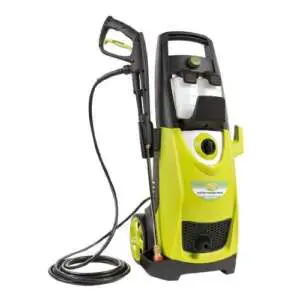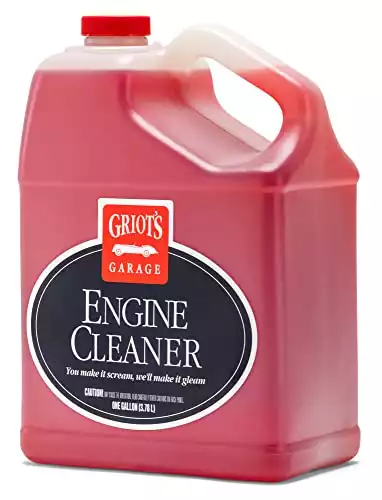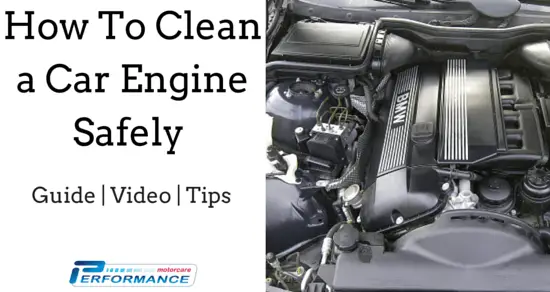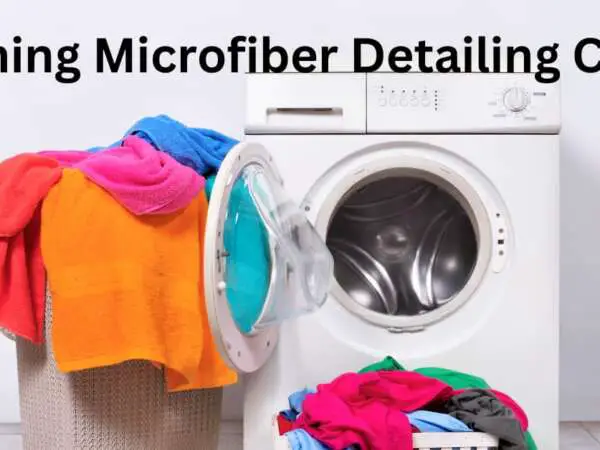When it comes to cleaning your car’s engine it can sound like a daunting task. Washing under your bonnet sounds like more trouble than it’s worth. Yet, it is actually simpler and can be safer than you have been led to believe. A trusted procedure with a couple of basic precautions can avoid any complications.
Fortunately for you, the essential guide for how to clean a car engine bay is well detailed below. There is no need to consult a costly professional, follow this straightforward process and you can clean a car engine at home.
Why Clean an Engine?
The engine is the most important component in your motor vehicle. Therefore it should be imperative to keep it in tip-top condition. Whilst hidden under the bonnet it is still regularly exposed to dirt.
Over the years a choking residue of grime will surely have built up. If neglected the poor engines will feel like it is suffocating. Here are the key reasons why you should learn how to clean an engine.
- – Clean engines run far better than grime covered ones
- – Leaks, breakages and problems are far easier to spot
- – A huge positive signal to any future buyers, higher sale value
- – Your pride and joy will gleam both inside and out
Routine maintenance is essential if our cars are to provide us long-term reliability. Cleaning, servicing and replacing parts keeping things running smoothly. So don’t overlook the importance of a well-kept engine bay. Continue reading and learn how to clean a car engine effectively.
Disclaimer – A Light Warning
Understanding how to clean a car engine safely will prevent any water related running problems. This guide outlines the best practices and protective measures from experienced professionals. Carefully follow the steps and precautions to ensure your engine remains perfectly happy.
Deviating from the guide or recommendations can result in temporary electrical issues. Your model could contain delicate electronic devices within the engine bay so you must take extra care.
Never become over-zealous with a pressure washer or hose whilst rinsing the engine bay. Always use low power settings and rinse carefully.
Before commencing with the engine cleanse you must check the manufacturer’s handbook for model specific precautions that need to be followed.
Precautions and Preparation
Before you learn exactly how to clean a car engine, consider preparing for the procedure.
Allocate an appropriate area for cleaning an engine. Oil, dirt, grease and nasties will be washed away, allow for suitable drainage. Consider the fact that cutting chemicals can have an adverse effect on the environment. Ensure your current drainage system is up to the task.
You can run some warmth into your engine before you begin. A little heat helps loosen the hardest of the heat baked dirt. Don’t let the engine get too hot though, one minute running should be long enough!
For extra precaution you can disconnect the car battery before beginning. Remember to disconnect the negative before the positive. Whilst you’re clean up the terminals and remove built up corrosion with a stiff metal brush.
The electrical components will not be happy if they become flooded with water. Ensure they are fully protected and water tight by using plastic bags and wraps. Specifically you must cover the battery, alternator, relay boxes, distributor and Electronic Computer Unit.
Other sensitive parts in your engine bay will need water protection. Air breathers, intakes, filters and carburetors must be covered before cleaning can begin. Use plastic or aluminium foil then secure them with cable ties and tape. You really don’t want water getting in these places!
What Can You Use to Clean a Car Engine?

There are a number engine cleaning products and tools to clean a car engine at home. Here are the essentials items you need to achieve a great result:
A medium brush with optional air compressor or leaf blower can be used to remove the initial loose dirt. You can even use a vacuum cleaner if yours is up to the job.
Grease cutting chemicals are needed for degreasing and de-gunging the engine. This can be applied using a common paintbrush, trigger spray bottle or aerosol.
Numerous engine cleaner products are available, but you could still use of grease cutting dish detergent mixed with water. (The only time and place this should be used on your car).
Rinsing your engine bay of dirt and chemicals calls for a hose or pressure washer. Ensure only low powered settings are used and always rinse with caution.
Since your electrical components need extra care you must use a to prevent electrical issues. Dry brake cleaner is highly effective and commonly used.
A small wire brush makes good work of the aluminium parts. A corrosion neutralising product can also be used in conjunction.
Plastic parts can be cleaned using medium stiff plastic brush first. Then use a sponge and soapy water to finish off.
How to Clean a Car Engine – 10 Steps
- Begin by tackling the loose dirt cumulating in your engine bay. Use a bristled brush to scrub the surfaces. Blow off the debris with an air-compressor, blower or vacuum. Beware of the power of blowers near any sealed parts.
- Next apply de-greaser to the engine block and main metalwork. Focus on the grubbiest areas first, using paintbrush to really work it in. Try to get into all the gaps where grime is hiding. You can leave the electrical components alone for now.
- With your engine bay sufficiently coated in de-greaser you must now leave it to settle. Allow enough time for the de-greasers to fully penetrate the dirt and release it’s grip. 30 minutes should suffice.
- Now rinse the entire engine bay with clean water. The grime should be easily dislodged and washed away along with the de-greaser. A hose or pressure washer makes for speedy completion. Take care not to focus the water stream too strongly on sensitive areas.
- Clean up the aluminium parts of your engine compartment with a small wire brush. Use corrosion neutralising chemical products for assistance. Finally, buff up the surface finish with a Scotch-Brite pad (for non-polished metal parts only).
- The plastic panels and components should first be scrubbed down with a plastic bristled brush. Wash the surfaces with a sponge and soapy water.
- At this point consider repeating the de-greasing and rinsing process if required.
- Surface water can be wiped off with a dry cloth. You could use an air compressor or blower carefully to blow off the excess water. Ensure you don’t force water through to sensitive areas.
- You can now safely remove the protective measures from your electronic components. Any cleaning required should be performed with a cloth and non-residue cleaner such as dry brake cleaner.
- Allow the car to air and dry fully overnight. In the morning admire your gleaming engine and perform the final wipe down. Now is the perfect time to perform an inspection for visible leaks and damage. Also consider following through the 10 Vital Car Checks.
Engine Cleaning Video
Clean Engine After Care
Congratulations, you are now fully informed on how to clean a car engine correctly. When you complete the procedure once it’s easy to keep on top of maintenance. The initial cleanse removes the most stubborn aged on grime. From now on the build up of residue will be greatly reduced.
To maintain your gleaming engine bay consider spot cleaning once every 1-2 months. Then a more intense wash every 6 months to keep your engine in great shape.
Over To You
Do you have your own experiences or tips on how to clean a car engine you could share with our other readers? Do you have a favourite product? Please let us know in the Disqus comment section below.


